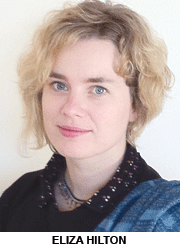 I’ve stolen this title phrase from my mother, a recently retired academic from the education faculty at Cambridge University (UK). It summarises the need — and demand — here in India for education which makes the link between academic mandate and creativity.
I’ve stolen this title phrase from my mother, a recently retired academic from the education faculty at Cambridge University (UK). It summarises the need — and demand — here in India for education which makes the link between academic mandate and creativity.
What my mother means by “drills and skills versus thrills and frills” is the false and dichotomous relationship between the hard academic stuff that has to be learned by rote, crammed into the head to earn a degree and career, and the “soft, sensuous, physical, musical, creative stuff that fosters a happy child”. Her grievance was — and remains — that thrills and frills activities are regarded as frivolous. She was talking about education in the UK but her grievance is equally applicable to primary-secondary education in India.
My experience of the Indian education system began in 1999 when I was a researcher evaluating the efforts of the Union government and NGOs to upgrade school education. In the District Primary Education Programme (DPEP) — precursor of the Sarva Shiksha Abhiyan (SSA) — something called “joyful learning” was promoted. The absolute nadir of my research excursions was touched in the Kalahandi district of Orissa, where I witnessed a worried teacher beat a group of hysterical and bewildered children with a large stick to arrange them in a circle to sing a song. And this was because I had innocently asked if he did any joyful learning in his school.
Reading the latest reports on SSA, it seems the government school system is still struggling with the same issues, although there are changes afoot. It’s wond-erful, for instance, to see District Institutes of Educ-ation and Training and some State Councils of Education Research and Training in collaboration with the National Museum Institute, beginning to focus on museum education (supported by my company Flow India), and that the new B.El.Ed course has drama as a key teacher training focus. And within the private education sector, there’s a genuine fervour for creative learning, with parents expecting a fundamentally different experience for their children than that which they suffered in school. These latter-day efforts can be defined as nurturing experiences which integrate academic learning and creativity in a way that intrinsically honours childhood as a different stage of life and strengthens learning and skills to support later education.
Indeed, there’s a growing chorus favouring creativity to be embedded into academic learning from primary through to the tertiary stage, to produce graduates who are flexible, collaborative, enquiring and open-minded individuals equipped to deal with the radical challenges of the fast evolving global economy. In fact, India has a ready blueprint which genuinely encourages deep integration of academic thought and creativity embodied in the National Curriculum Framework 2005. But the intellectual vision of that document far outweighs the practical tools it offers to schools that want to follow the path. I remember this conundrum from my teaching days. We teachers understand what we need to do, but we don’t know how to do it.
Contemporary education is replete with jargon, but whether you call it ‘topic-based teaching’, ‘integrated learning’, ‘child-centred learning’, ‘creative learning’, ‘alternative education’, ‘enquiry-based learning’, ‘drama/art in education’, or ‘cross-curricular learning’, the new pedagogies provide children holistic experiences which honour the experiential capacities of students. As they learn, children use their senses of smell, taste and touch, as well as body language, in ways that we have forgotten as adults. If as educators we can harness this, it will be much more meaningful than reading or lecturing in chalk and talk style.
Enriched education allows us to criticise, empathise, hypothesise, enquire, generate questions and find answers to them. It is intrinsically motivating, as it starts with the enquiring nature of all human beings and liberates by honouring curiousity rather than punishing ignorance.
But how do we facilitate this rich education? Normal subject textbooks deliberately divide and compartmentalise chunks of knowledge, thereby removing them from meaningful or integrated contexts. For instance, how many Indian children apply their knowledge of the Indus Valley civilisation to the development challenges faced by modern India? How many are asked to do so?
By supporting a cross-curricular learning approach which integrates ‘drills and skills’ with ‘thrills and frills’, forward-thinking schools can enrich their curriculums. Engagement with different approaches that have been taken by artists, writers, builders and craftsmen, to addressing fundamental questions of the human condition, will nurture creative, empathetic, critical and collaborative minds, and build the skills of flexible application and interrogation of received knowledge. What do we learn about the unconscious soul from Rabindranath Tagore? What stories was artist Ravi Varma trying to tell? How has art enriched our idea of everyday life? India, we know, has an extraordinarily complex and diverse cultural life and history, but one that is rarely exploited sufficiently within school curriculums.
(Eliza Hilton is director of Flow India — a Delhi-based consultancy, teacher training firm and education organisation)